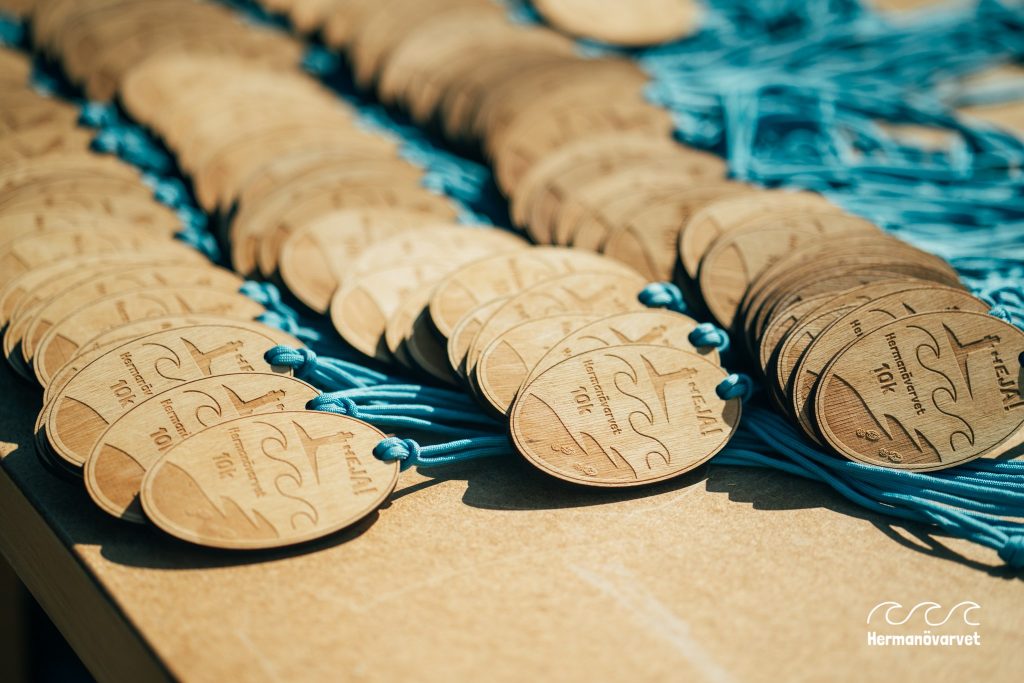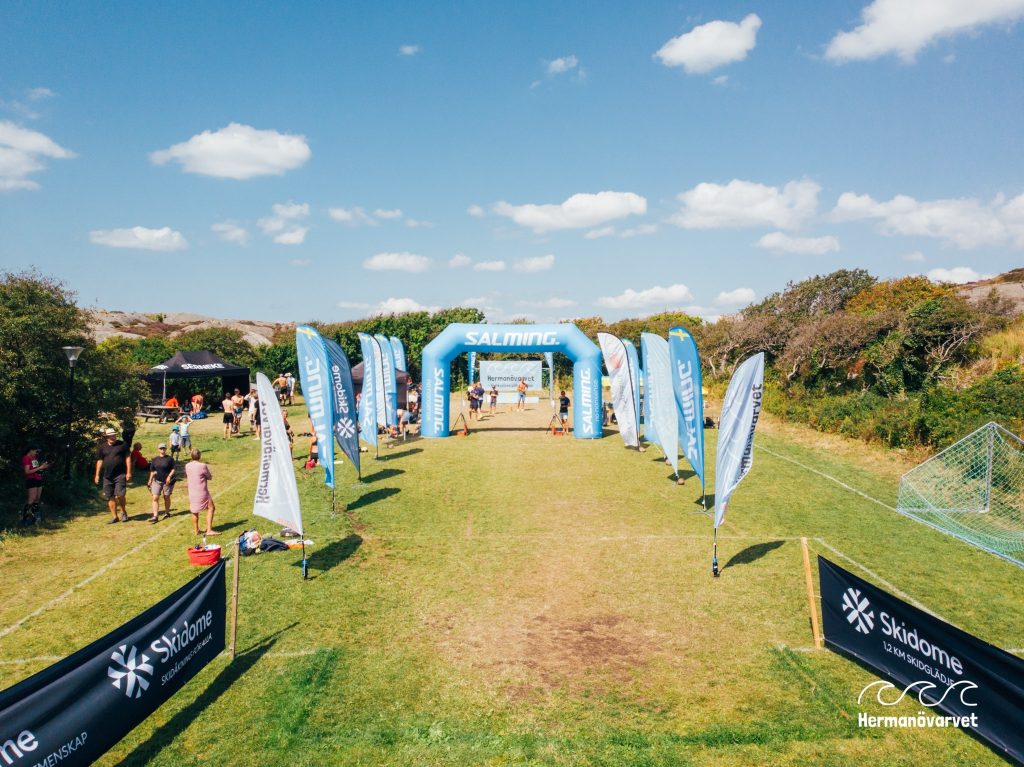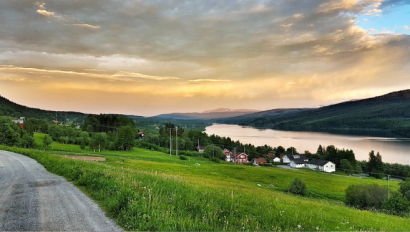Organize an Outdoor Event – The Complete Guide {With Checklist}

Article updated 20 June 2024.
Even with loads of motivation and passion, it can seem daunting to organize events. It’s easy to forget little details that make all the difference – even with experience! This checklist, split into three parts, is a useful resource to help you make sure your events run smoothly with a high level of quality.
Pro tip: start early…it might take longer than you think!
How many points can you already check off? Fill out the form below and download the list to find out:
Organize an Outdoor event – the complete guide
Based on the checklist, here follows a more detailed description for each step in the list that you may refer to if needed. Highly recommended to read through if you’re a first-time organizer.
When and why?
Decide on a date for your race. This is one of the most important features of your race! Try not to clash with any other big events in your region (check published race calendars for your sport) and take advantage of holiday periods or weekends.
Planning the Race Route & Arena
Create a sketch of your start & finish area (or arena). Think about accessibility for emergency services, your participants, any spectators and try to make it family friendly. Do you start and finish in the same place or do you have a remote start? How will participants move between the arena, the start and then the finish? Use maps or satellite images to help clarify things for yourself and your participants. Also think about the weather, muddy ground and wind direction – your arena should be as comfortable as possible for your participants (but you can make the race itself as tough as you like 😉 ).
For a detailed breakdown of how to set up the arena check out this post.
Next, create a map of your race route. Mark on the checkpoints, aid stations and other critical information. This helps participants understand the challenge. An elevation graph can be useful too. Providing a .gpx file can also help participants.
Finally, create a parking and logistics plan. How will your participants travel to your race? Can they travel by public transport? If not, encourage car sharing, but where will you park the cars? Local farmers will often be happy to rent a field without crops in, and bus shuttles can be arranged fairly easily and cheaply too.
Size, Scale and Budget
How big is your race going to be? How many participants will be interested, or how many are allowed – and what price are you going to charge? Obviously, you don’t want to lose lots of money, so it’s important to make a budget and balance the costs against the gains. A simple spreadsheet is a great start. List all the features and wishes of your race, put them in a priority order, and estimate a cost for them. Then you can sum up the estimated costs at certain points, and divide by the number of expected registrations. These outcomes will give you a good idea of the cost per participant, and subsequently, the minimum required entry fee (without taking into account sponsorship subsidisation or similar).
Calculate your own race budget, and see how much it costs to organize a race.
Tasks, staff and volunteers
Make a list of jobs and roles required for your race. As a minimum you will need someone to start the race, and someone in charge of timing. You might want a marshall or two at checkpoints. You will also need people trained in First Aid available.
Next, find volunteers or others to fill the roles required for your race. Friends and family often have the least excuses… but you can also contact local clubs or associations. Tip: offer small incentives to those that help out, such as free food, a free start to another race of yours or a pack of goodies from sponsors.
Safety Planning
Conduct a risk assessment. Think about all the risks that could affect the event. Include weather, fire (indoor areas), sickness, injury and public safety – as well as participant safety during your race.
Permits & Permissions
Contact your local authorities for required permits. They will want to know that you have a good plan for your race! You might have to provide arena sketches and risk assessments to get a permit. You may also have to contact police and emergency services and apply for permits through them as well.
Usually you will be required to inform landowners and get permission for where your race route goes.
Technology, Tools & Registration
Choose a registration and event management platform. This is the basis of your event. It needs to be easy to use, both for yourself and for your participants. You will need to manage a lot of data and communicate effectively with your participants. Start-lists, number-bib assignment and result display & live results are important features. As is the payment system. Perhaps you want your participants to have access to a mobile app? You may also be interested in tracking the data of your participants journey – from your initial marketing to their final registration. A good event management system can help you with all of this.
Timekeeping Provider
Choose a timing method and technology. Do you need chip-timing? Or perhaps you only need a timing app from a phone or tablet that provides instant results with minimum effort? Reliability is key! A technical failure will really make your race feel bad – particularly if the results are messed up. Make a full check of your equipment, systems and processes ahead of time, and make sure you have competent people to operate them. Also, always make sure you backup your data and results.
Results will need integrating to your website or registration platform. And they need to be correct. The faster you can get official results the better – perhaps you even want live results and tracking?
Marketing your race
Create a website for your race – there are loads of great tools out there! Make it mobile friendly. Decide which marketing channels to use and make a marketing plan. Who is your target customer and how will you communicate your unique race to them?
For useful tips on how to succeed with your event marketing efforts, what channels to use and how to get by on a smaller budget, check out this post about event marketing.
Prize, finisher medals & t-shirts
What kind of prizes do you want? Do you have a local sponsor that can provide a prize? Remember that winners of races often have plenty of clothes, kit and shoes already…so perhaps something edible or a voucher for a local hotel or restaurant can be a good option.
Do you want all your finishers to get a t-shirt, a branded buff, or just a medal? Think sustainably – perhaps t-shirts and medals can be made of recycled materials, or maybe you don’t need them at all. If you decide to include any merchandise, remember to: ask for sizes in your registration forms and order it a few weeks in advance.
A good option to attract top and pro athletes is to offer prize money for the podium finishers, you can ask if your sponsors are willing to provide resources for this. Think of how to encourage your best participants to come back, year-after-year, and create a legacy for your race.
Learn more about race merchandising.

Check-in and number bibs
You’ll need to check-in your participants before the race, and hand out the number-bibs, timing chips and GPS trackers if you’re using them. You might also need to check mandatory equipment. With regard to number bibs, think sustainably – reuse or make them recyclable or biodegradable – or perhaps you don’t need them at all? Remember though, pinning on a number bib is part of the ‘race feeling’ for many of your participants.
Photos and Media
Photos and video are essential for communication. Participants love it for their own social media, and you’ll need it for future event promotion. Organize a local photographer to make great digital content for you. Drones are also fantastically flexible – and create cool content – plus much cheaper and more sustainable than the old method of using a helicopter. Just make sure you are allowed to use drones at your race location.
After-race parties
A great way to add some extra value and to connect with your participants is to have a post-race party. This could just be a meet-up down the local bar, hotel or restaurant, or perhaps a pasta-party in a marquee tent in the arena. Some of the most memorable post race parties we have been to were in car-parks and big tents!
Learn how to make your race spectator friendly.
Race Information
Communicating important information about your race is critical. Don’t assume that your participants will have read your emails or your website! Write a race briefing that you can give right before the start. Keep the briefing brief though – just the important bits.
Build your race arena
It’s time to set up the arena, start and finish! Your race will need a start and finish line as a minimum. Tents, banners, shelters, flags, barriers, etc, etc…are not necessarily required, but they do add a lot of professionalism to the feeling of the race. Remember to order any flags or signs in advance.
Mark the race route
Ever got lost in a race? It’s really annoying if an event has tried to save on course markings and you run the wrong way. So make sure you mark the course really well, turns and junctions especially. Even straight sections should have a few markings to keep the participants confident they are on the right track. (Or you could require participants to navigate between your checkpoints…but that’s for another blog post.) Think sustainably when you are choosing how to mark your route. Reuse and recycle your markings and consider using biodegradable options too (these might still need to be collected depending on your local nature and landowners, but at least if any that go missing they have a low environmental impact).
After the race
When your race is over, you’ll need to tidy up and leave no trace that you were ever there! Collect all rubbish, and tidy up your race route too. Hopefully you can even leave it more tidy than you found it – perhaps even organizing a Plogg (from the Swedish “Plock” and “Jogg” – picking up trash while out jogging)!
Depending on your equipment, you’ll need to find storage space for it until it’s next use.
It’s also time to check all payments and costs, do some accounting, pay your bills and send out invoices. Having your finances under control is the key to consistency and growth.
Once everything has calmed down, it’s a great idea to collect feedback through a participant survey. Hopefully they can give you some great motivation and ideas for improvement going into your next race!
Done and dusted? Let us know if you have any tips for planning the perfect race. We always love a good race chat. Get in touch with our team or get started with RaceID EMS.



